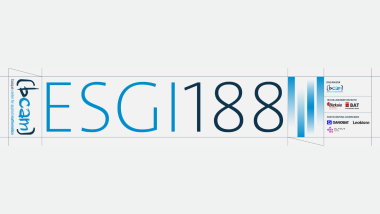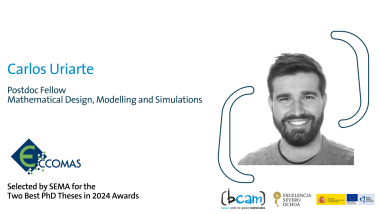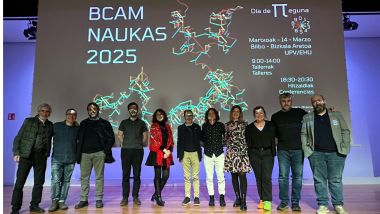Razvan-Dumitru Ceuca defenderá su tesis doctoral el lunes 17 de octubre
La defensa se llevará a cabo en la Facultad de Ciencias y Tecnología en la UPV/EHU
Razvan-Dumitru Ceuca se licenció en Matemáticas por la Universidad Alexandru Ioan Cuza de Iasi (UAIC) en 2015 y en 2017 obtuvo el título de Máster en Matemáticas en la misma universidad.
Se incorporó al grupo de Análisis Aplicado del Basque Center for Applied Mathematics – BCAM y como estudiante de doctorado en 2018.
Su tesis doctoral, Various results concerning homogenisation of nematic liquid crystals, ha sido supervisada por Prof. Arghir-Dani Zarnescu (BCAM-Ikerbasque) y Prof. Eugen Varvaruca (UAIC).
La defensa se llevará a cabo en el Salón de Grados de la Facultad de Ciencias y Tecnología de la UPV/EHU en Leioa el lunes 17 de octubre a las 10:00 horas.
En nombre de todos los miembros de BCAM, nos gustaría desear a Razvan la mejor de las suertes en la defensa de su tesis.
PhD thesis Title:
Various results concerning homogenisation of nematic liquid crystals
Abstract:
In this thesis we present various results concerning homogenisation of nematic liquid crystals: two of them are in perforated domains, while the other one concerns rates of convergence for boundary homogenisation. The first work described in this thesis is a T-convergence result for the Landau-de Gennes model in 3D domains with connected perforations. The goal of the analysis is to find new terms in the energy functional that are independent of the gradient. The second result is an error estimate for a 2D toy model used to describe rugosity effects in nematic liquid crystals via homogenisation problems, using once again the Landau-de Gennes model. The last problem is a local L2-convergence result for a homogenisation problem in R2 with isolated perforations. Here we use the Oseen-Frank model, with the goal of finding new gradient-dependent terms in the energy functional.
We start, in Chapter 1, with a brief introduction to nematic liquid crystals. We introduce two major variational models used to describe nematic liquid crystals: Landau-de Gennes (LdG) and Oseen-Frank (OF). For LdG theory, which uses Q-tensors as the order parameter, we present typical choices for each type of energy contribution (bulk, elastic and surface). For OF theory based on the order parameter n ∈ S2 we discuss the elastic energy, that depends on the director and its gradient. We then present a short summary of the main mathematical results obtained for LdG and OF.
In Chapter 2, we analyse a homogenisation problem in R3 using the Landau-de Gennes model in which the perforations form a cubic microlattice. We assume a dillute regime, that is the volume of the cubic microlattice tends to 0 as its characteristic length scale tends to 0. The goal of this problem is to show that, given this geometrical setting, by choosing various types of surface energies one can obtain a new material in the limit of vanishing characteristic size of the microlattice. This material also behaves like a nematic liquid crystal, but now with different bulk coefficients. At the end of this chapter, we discuss a rate of convergence of the approximating surface energies to a homogenised term.
In Chapter 3, we concentrate on achieving and improving error estimates in homogenisation problems, since they can give us crucial information for manufacturing processes. Here, we consider a simplified 2D model in which we highlight how one could replace a rugose boundary with the imposed homeotropic alignment by a flat boundary with an effective alignment depending on the initial geometry of the rugosity. We are able to improve an L2 error estimate for a class of linear nonhomogeneous Robin problems.
In Chapter 4, we consider a general elastic energy in a 2D case for the Oseen-Frank model in domains with isolated perforations. The goal of this study is to analyse how one could obtain a nematic liquid crystal with novel elastic properties via homogenisation procedures. Under suitable conditions we can analyse the S1-valued homogenisation problem via a scalar problem obtained through the lifting procedure. We also prove a local L2 convergence result.
Related news
Sobre el centro
ESGI 188 (European Study Group with Industry) tendrá lugar en Bilbao del 26 al 30 de mayo de 2025
La gente del BCAM




